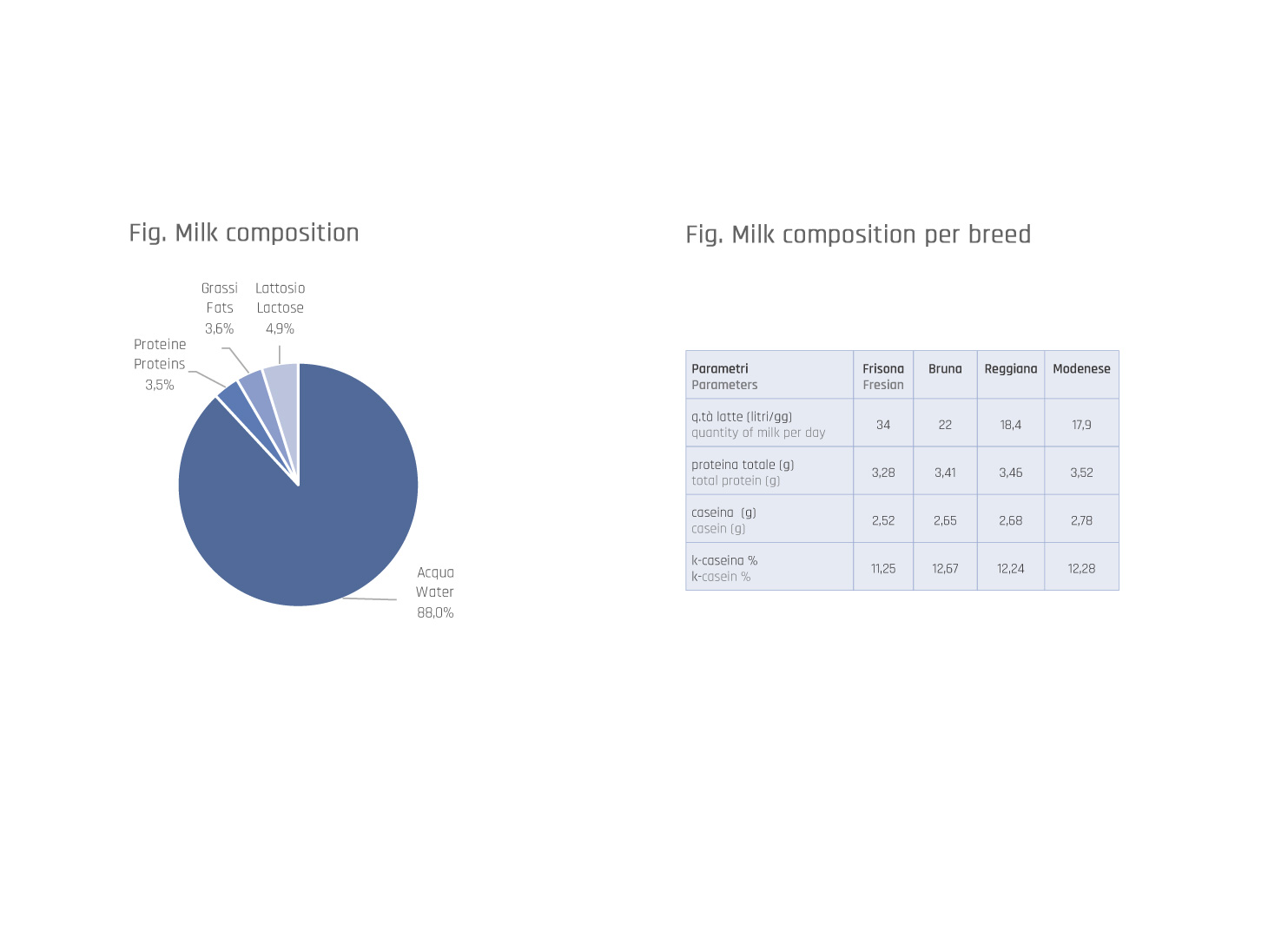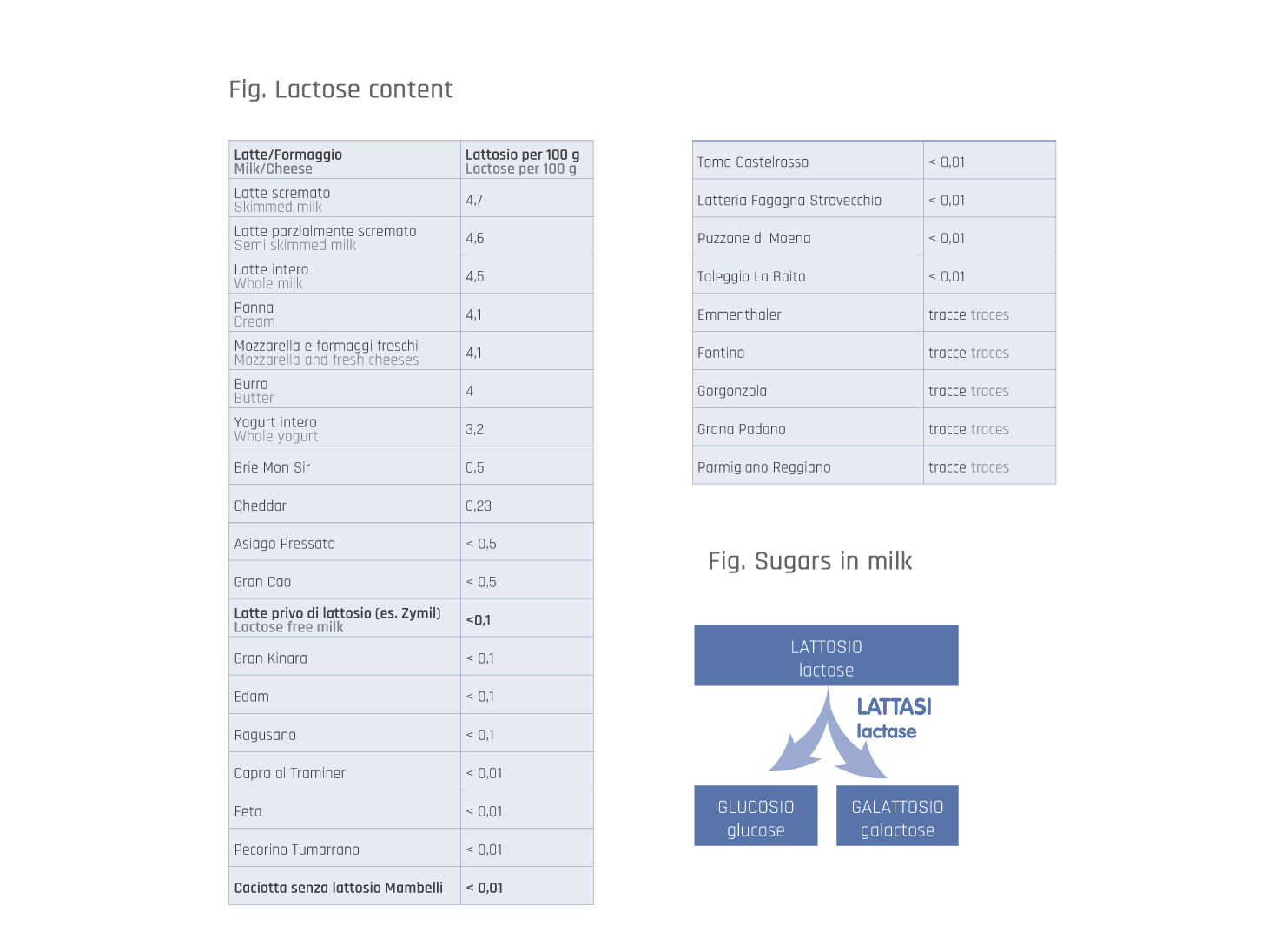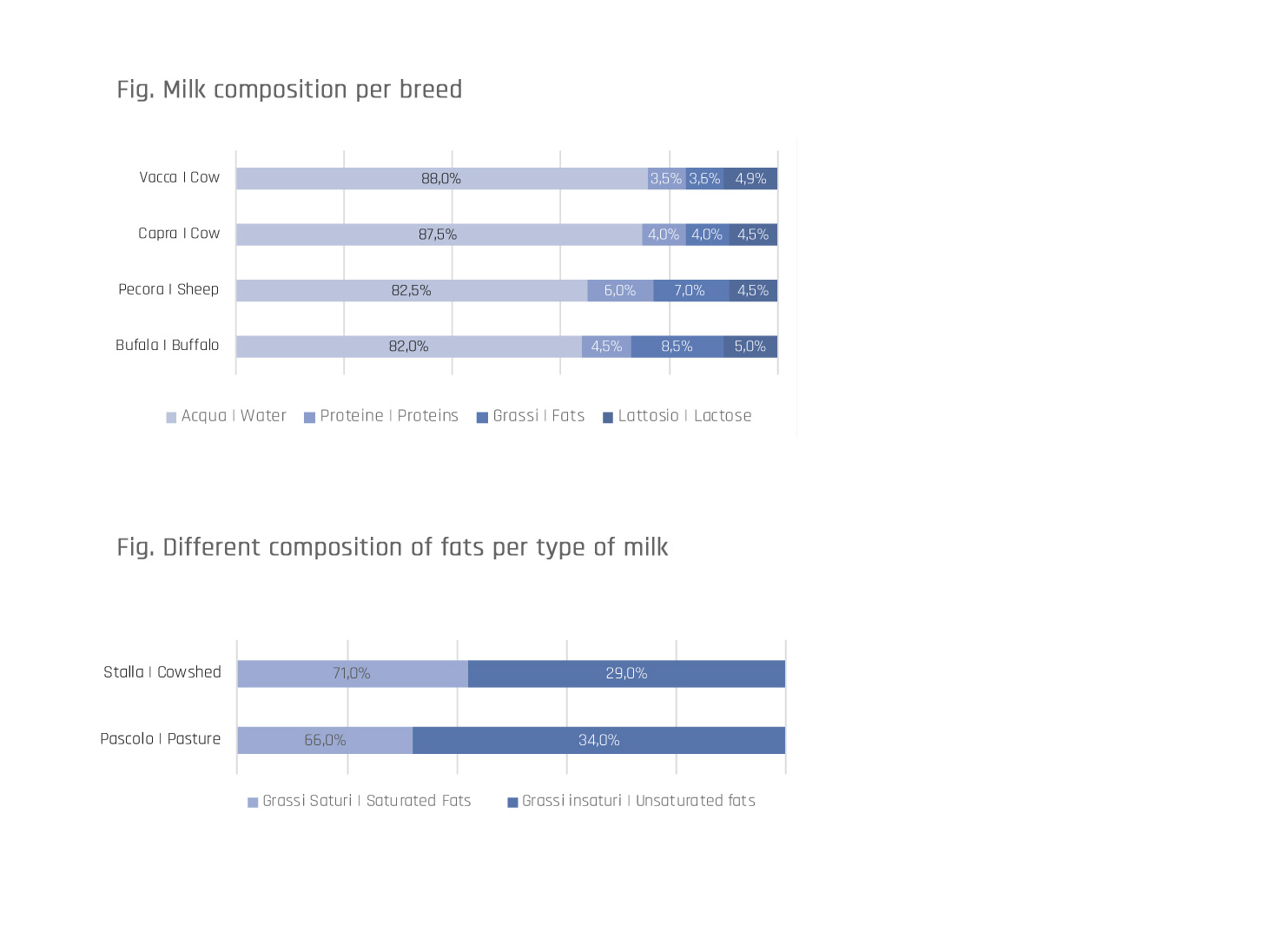We often hear about raw milk, vegetable rennet, lactose-free cheeses, selected ferments or milk started culture, but sometimes it is not clear how these aspects are related to each other. Probably it happened to us that some customer has asked questions to which we were not immediately able to answer.
That’s why we thought of a section to deepen the topic of the ingredients that make up the cheese, few and apparently simple: milk, salt, rennet. To these, however, are added also lactic ferments, selected molds, preservatives (such as lysozyme), herbs, spices etc.
A theme of this kind can certainly not be addressed in two pages, but deserves to be investigated to be able to appreciate features and aspects that sometimes may not be immediate.
The first ingredient we take in consideration is milk. Usually in cheesemaking is used cow’s milk, of goat, sheep’s or buffalo’s, at least in the western part of the world. Each of these types has a particular composition, which however varies within the same species passing from one breed to another or depending on the moment of lactation (richer at the beginning, poorer at the end).
In addition to water in milk we find three main nutrients: proteins, lactose and fats.

Proteins
They contribute about 3.5% to the milk composition, are divided into caseins (about 80%), absolutely essential for cheese making, and serum proteins: lactalbumin and lactoglobulin (about 20%), which we generally find in big quantities in ricotta.
For dairy purposes, milk must have certain characteristics. Some of these concern the content of casein and, above all, potentially favorable genetic caseins. The quantum-qualitative variations of casein have a decisive effect on the yield in transformation and on the characteristics of the curd. Casein divides itself into fractions (αs1, βs2, β e k), and in particular is k-casein the one that most influences the yield in caseification and that has further genetic variants that influence the quality of the coagulum.
Lactose
It is milk sugar (almost 5% of its composition) and is found in its derivatives in variable quantities.
Lactose digestion takes place thanks to an enzyme, lactase, which is found in the small intestine and splits lactose into two simple sugars which is composed: the “glucose” and “galactose”. The lactase already appears at the 23rd week of gestation and its activity is maximum at birth, remains so for all lactation and begins to decrease during weaning with a progressive reduction, which varies from individual to individual. People suffering from lactose intolerance no longer produce lactase. An increasingly widespread intolerance - about 40% of the population in Italy suffers of it - although probably the mild form of the disorder seems even more common.
But be careful not to confuse this disorder with the allergy to milk proteins, a more serious disease because those who suffer cannot ingest milk and derivatives. The level of intolerance is rather subjective: some may find the milk poorly digestible, others can’t just consume it without getting sick. The disorders caused by lactose intolerance (swelling, flatulence, abdominal pain, diarrhea) are due to the fact that the bacterial flora present in the intestine causes this sugar to ferment, which has not been digested due to the lack of the enzyme lactase. People who are intolerant to lactose must also pay attention to goat’s cheese, as they also contain it.
The rules for the use of claims regarding the absence or reduced presence of lactose in foods are not currently harmonized at EU level, with the exception of foods for infants (children under 12 months of age). Pending the Authority adopting relevant measures, AILI (Italian Association of Intolerant Lact), which represents the category of lactose intolerant in Italy, has identified three captions that could be used with the related limits:
lactose free: less than 0.01 g / 100 g
low / reduced lactose content: less of 1 g / 100 g
naturally lactose-free: it does not contain milky ingredients inside it except for for some types of dairy products.
Lactose is essential for the development of lactic bacteria and microorganisms, which play a fundamental role in the composition of cheese flavour, because it is their main nutrient. In hard cheeses the little residual lactose at the end of processing is almost entirely transformed into lactic acid.
Lactose-free cheeses: what does it mean?
Lactose is more present in fresh or short-aged cheeses, while it is naturally absent, or present in traces, in hard and rather aged cheeses, because the production technology separates a larger quantity of serum. This process does not depend in any way on the type of rennet used, but only on the size of the curd and the possible cooking of it.
Delattosed cheeses
Delattosed dairy products are produced like other cheeses, but the enzyme that splits lactose is added to the milk before starting the processing. In this way it is as if lactose were “pre-digested”. The appearance doesn’t change compared to cheeses that contain lactose, however on the palate they are slightly sweeter.

Fats
On average in cow’s milk lipids or fats are about 3.6% and are in the form of small droplets called globules. Fat plays an essential role from an organoleptic and sensorial point of view, because during the maturing of cheeses, the lipases - enzymes that can derive from milk, rennet, molds, added and non - determine the release of medium-chain fatty acids, which contribute to the taste and aroma of cheese. Goat and sheep cheeses have a higher percentage of these fatty acids and are therefore endowed with a more intense and spicy aroma.
For years the consumer has been informed about the importance of controlling the quantity of fats introduced with nutrition and in recent times to this awareness has been added an extra piece: that is the attention to saturated fats.
Actually, saturated fatty acids in milk they are about 70%, however, what is not said is that fat is the constituent of milk most subject to variations, both quantitatively and qualitatively. Leaving the cows to alpine pasture increases unsaturated fatty acids (from about 29 to 34%) and the ratio of saturated / unsaturated fatty acids decreases from 2.5 to 1.8.
It is interesting to know that throughout Europe they are numerous studies have been conducted that demonstrate what our grandparents probably knew for some time, or “that the cows are not made to eat animal feed all year “otherwise the quality of milk decreases, the gas produced from the animal increase and the dejections pollute more the land, thus growing the risks to our health and the entire planet.
It is essential to return to a lifestyle that is closer to nature even with the production of foods that express genuineness and wholesomeness. A balance must be re-established between environment, production and quantity, and this can only be achieved through conscious choices. Surely the cheeses made with grazing milk and mountain pasture are a good start.

Giorgia Barbaresco
Quality Director





